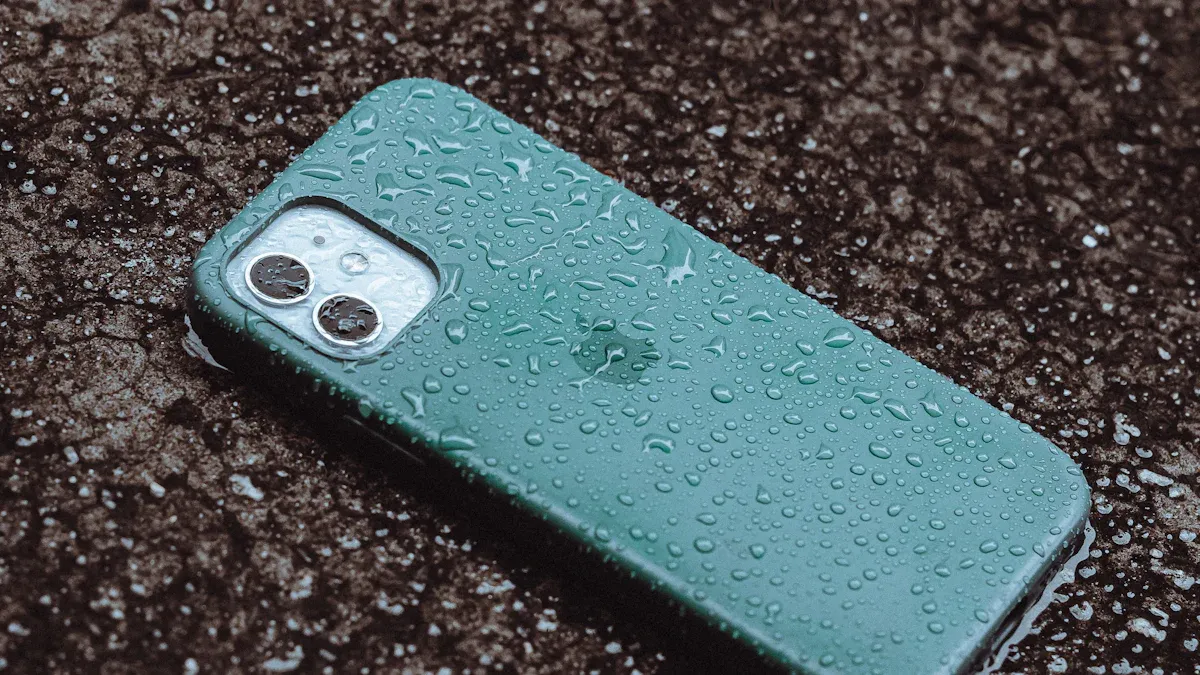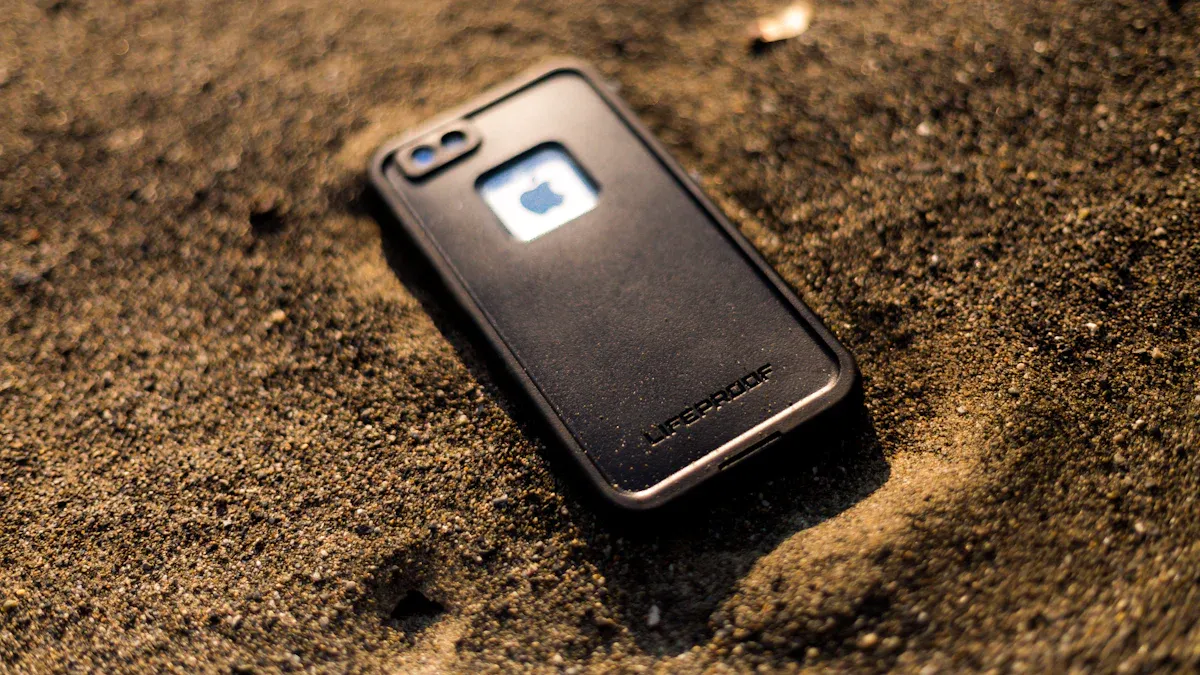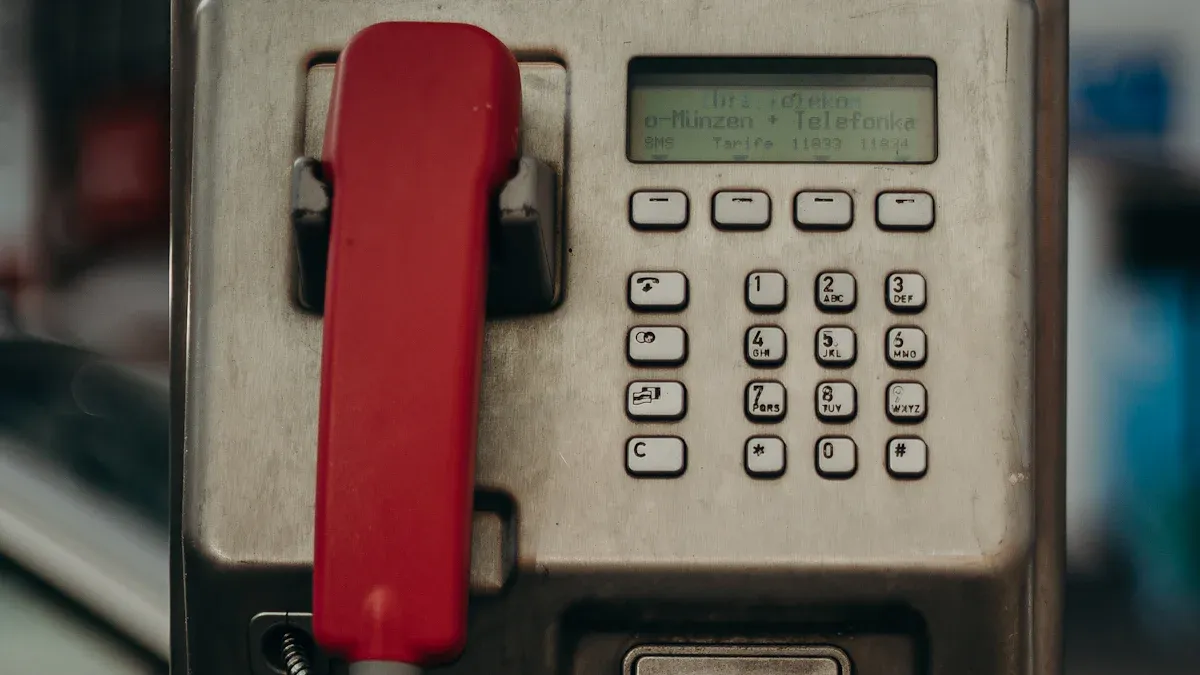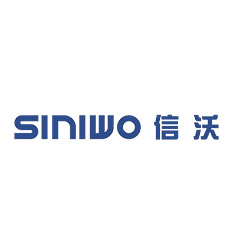
When selecting a waterproof telephone, you need to understand IP ratings. These ratings measure how well a device resists dust and water. For example, an outdoor waterproof telephone requires higher IP protection to withstand harsh conditions. Knowing these ratings helps you choose the right IP waterproof telephone for your specific environment.
Key Takeaways
- IP ratings show how well a device blocks dust and water. Higher numbers mean better protection.
- Pick a waterproof phone with at least an IP67 rating for outdoor use. It can handle strong rain and dust.
- For areas near water, choose a phone with an IP68 rating. It can stay underwater deeper than 1 meter for a long time.
What Are IP Ratings and Why Are They Important for IP Waterproof Telephones?

The structure of an IP rating (e.g., IP67, IP68)
IP ratings, or Ingress Protection ratings, are a standardized way to measure how well a device resists dust and water. These ratings consist of two digits, such as in IP67 or IP68. Each digit represents a specific type of protection. The first digit indicates the level of protection against solid particles like dust or debris. The second digit shows how resistant the device is to water ingress.
For example, an IP67 rating means the device is completely dust-tight and can withstand immersion in water up to 1 meter for 30 minutes. On the other hand, an IP68 rating offers even greater water resistance, often allowing the device to survive in deeper water for longer periods. Understanding this structure helps you evaluate whether a device, such as an IP waterproof telephone, meets the demands of your environment.
The first digit: Protection against solid particles (dust, debris)
The first digit in an IP rating ranges from 0 to 6. A rating of 0 means the device has no protection against solid objects. As the number increases, the level of protection improves. For instance:
- IP1X: Protects against objects larger than 50 mm, like a hand.
- IP3X: Protects against objects larger than 2.5 mm, such as tools or wires.
- IP6X: Offers complete protection against dust, making the device dust-tight.
If you plan to use an IP waterproof telephone in a dusty environment, look for a rating with a first digit of 5 or 6. This ensures the device can handle exposure to fine particles without compromising its functionality.
The second digit: Protection against water ingress
The second digit in an IP rating ranges from 0 to 8. It measures how well a device resists water. A rating of 0 means no protection, while higher numbers indicate greater resistance. Here are some examples:
- IPX3: Protects against water sprays at angles up to 60 degrees.
- IPX5: Resists water jets from any direction.
- IPX7: Withstands immersion in water up to 1 meter for 30 minutes.
- IPX8: Survives continuous immersion in water beyond 1 meter, with specific depth and duration defined by the manufacturer.
For outdoor or marine environments, an IP waterproof telephone with a second digit of 7 or 8 is ideal. This ensures the device remains operational even when exposed to heavy rain or submerged in water.
Tip: Always check both digits of the IP rating to ensure the device meets your specific needs. A high water resistance level won’t matter if the device can’t handle dust or debris.
Understanding the Protection Levels of IP Waterproof Telephones
Solid particle protection levels (e.g., IP0X to IP6X)
The first digit in an IP rating tells you how well a device protects against solid particles like dust or dirt. This level ranges from 0 to 6, with higher numbers offering better protection. Here’s a breakdown of what each level means:
- IP0X: No protection against solid objects.
- IP1X: Protects against large objects over 50 mm, like a hand.
- IP2X: Blocks objects larger than 12.5 mm, such as fingers.
- IP3X: Prevents entry of objects over 2.5 mm, like small tools or wires.
- IP4X: Protects against objects larger than 1 mm, such as fine wires.
- IP5X: Offers partial protection against dust. Some dust may enter but won’t harm the device.
- IP6X: Fully dust-tight. No dust can enter, even in dusty environments.
If you plan to use an IP waterproof telephone in a dusty or sandy area, look for a rating with a first digit of 5 or 6. This ensures the device can handle exposure to fine particles without losing functionality.
Note: Dust-tight devices (IP6X) are ideal for industrial or outdoor environments where dust and debris are common.
Water resistance levels (e.g., IPX0 to IPX8)
The second digit in an IP rating measures water resistance. This level ranges from 0 to 8, with higher numbers indicating better protection against water. Here’s what each level means:
- IPX0: No protection against water.
- IPX1: Protects against vertical water drips.
- IPX2: Resists water drips when tilted up to 15 degrees.
- IPX3: Protects against water sprays at angles up to 60 degrees.
- IPX4: Resists splashes from any direction.
- IPX5: Withstands low-pressure water jets from any direction.
- IPX6: Protects against high-pressure water jets.
- IPX7: Allows immersion in water up to 1 meter for 30 minutes.
- IPX8: Survives continuous immersion in water deeper than 1 meter, with depth and duration specified by the manufacturer.
For outdoor or marine environments, choose an IP waterproof telephone with a second digit of 7 or 8. This ensures the device can handle heavy rain, accidental submersion, or even underwater use.
Tip: Always check the manufacturer’s specifications for IPX8 devices. The depth and duration of water resistance can vary.
Examples of IP ratings commonly used in waterproof telephones
Waterproof telephones often feature IP ratings like IP65, IP67, or IP68. Here’s what these ratings mean:
- IP65: Dust-tight and resistant to low-pressure water jets. Suitable for outdoor use in light rain or dusty conditions.
- IP67: Fully dust-tight and can withstand immersion in water up to 1 meter for 30 minutes. Ideal for outdoor environments with occasional water exposure.
- IP68: Dust-tight and capable of surviving continuous immersion in water deeper than 1 meter. Perfect for marine or underwater applications.
When selecting an IP waterproof telephone, consider the environment where you’ll use it. For example, an IP65-rated device works well in light rain, while an IP68-rated device is better for underwater tasks.
Reminder: Higher IP ratings often mean better protection, but they may also come with a higher price tag. Choose a rating that matches your specific needs.
Choosing the Right IP Waterproof Telephone for Your Needs

Devices for industrial and outdoor environments
When working in industrial or outdoor settings, you need a device that can handle tough conditions. Dust, debris, and water are common challenges in these environments. An IP waterproof telephone with a rating of IP65 or higher works well here. These devices resist dust and can withstand water sprays or light rain. For example, construction sites or factories often have airborne particles that could damage regular phones. A dust-tight device ensures reliable performance in such conditions.
Additionally, outdoor environments expose devices to unpredictable weather. A telephone with an IP67 rating offers better protection. It can survive heavy rain or accidental drops into puddles. This makes it a dependable choice for outdoor workers.
Devices for marine or underwater applications
Marine and underwater environments demand higher levels of water resistance. If you need a device for these conditions, look for an IP waterproof telephone with an IP68 rating. This rating ensures the device can handle continuous immersion in water. For instance, underwater maintenance workers or marine researchers often rely on such devices. These telephones remain functional even when submerged beyond 1 meter, depending on the manufacturer’s specifications.
Saltwater can also be a concern in marine environments. Some IP68-rated devices include additional coatings to resist corrosion. Always check the product details to ensure it meets your specific needs.
Factors to consider when selecting an IP waterproof telephone
Choosing the right device involves more than just the IP rating. Consider the environment where you’ll use the telephone. Will it face dust, water sprays, or full submersion? Also, think about durability. Devices with rugged designs often last longer in harsh conditions. Finally, evaluate the cost. Higher IP ratings usually mean better protection but may come with a higher price tag. Balance your budget with the level of protection you need.
Tip: Always match the device’s features to your environment to ensure long-term reliability.
IP ratings play a vital role in determining the durability of waterproof telephones. They help you understand how well a device resists dust and water. By learning about these ratings, you can choose a telephone that fits your environment.
Remember: The right IP rating ensures your device performs reliably, even in tough conditions.
FAQ
What does "dust-tight" mean in an IP rating?
"Dust-tight" means no dust can enter the device. Devices with an IP6X rating offer complete protection against dust, ensuring reliable performance in dusty environments.
Can an IP68-rated telephone handle saltwater?
Yes, most IP68-rated telephones can handle saltwater. However, check if the device includes corrosion-resistant coatings for long-term use in marine environments.
Do higher IP ratings make devices more expensive?
Yes, higher IP ratings often increase costs. These devices provide better protection, making them ideal for harsh environments. Balance your budget with your specific needs.
Tip: Always verify the manufacturer’s specifications for accurate details about the device’s durability.


